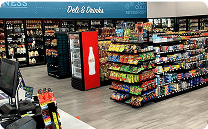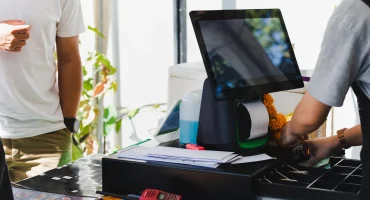In This article
Internal theft is stealing money, property, or time committed by an employee, which can be quite costly. According to a report from the National Retail Federation, the average dollar loss per dishonest employee case was over $1,500.
A Real Example of Internal Theft
One particular Subway store was able to verify an employee pocketing money by using the item correct feature on its registers. This employee rang up the items ordered and stated the amount to the customer; while the customer was gathering cash, she item corrected the tender to $0. The employee would collect cash from the customer, place it in the register, and then calculate the customer’s change.
After taking a more thorough look into the situation by using a Forensic Investigation solution from DTiQ named SmartAudit, the owner was able to clearly indicate that the employee had been ringing up fraudulent transactions.
What is Internal Theft?
There are many types of employee theft. Some examples include:
- Service theft: Many companies offer discounted or free services for their employees. Service theft can occur when a worker lets a friend or family member use their employee discount – or doesn’t charge them for services rendered.
- Time theft: Time theft is common, with many employees not even realizing they’re committing theft. This type of theft can mean falsifying time sheets or when employees take extended or unauthorized breaks.
- Money theft: Stealing money is one of the most blatant types of internal theft – but it can easily go unnoticed. For example, if an employee pockets tips from a tip jar before the money is counted, their manager may not be aware of the theft.
- Data theft: This type of internal theft occurs when an employee steals proprietary information, such as customer data, to sell or use.
- Inventory theft: Shrinkage, or missing inventory, is a type of internal theft in retail that many store managers already have on their radar. Forbes reports that shrinkage accounted for $60 billion in retail losses annually.
- Occupational fraud: Employees can steal from their employers by committing fraud. Employee fraud is a type of fraud that is a deliberate act involving the use of deception to gain an advantage from a position of trust or authority.
Signs of Internal Theft
There are noticeable warning signs of internal theft, like missing inventory or a register that’s short at the end of the day. But other indications of theft are more subtle – for example, if an employee always wants to come in early or stay late, it might be a sign that they are committing theft when other staff members aren’t around.
Of course, if your profit margins have taken an unexplainable hit, it’s a good idea to conduct an internal audit to identify the cause. This could be due to employee theft.
How to Prevent Internal Theft
The best way to address internal employee theft is by preventing it before it starts by implementing these loss prevention strategies:
- Background checks: Consider background checks during the hiring process
- Proper training: Ensure each employee is properly trained and understands the policies in place.
- Implement internal controls: Good financial practices reduce opportunities for internal theft. It’s important to use a system of checks and balances. For example, a single employee should never count or handle cash without another worker present.
- Implement monitoring systems: Camera monitoring can help employers review suspicious activity and catch improper practices.
Prevent Internal Theft With Help From DTiQ
Preventing internal theft comes with its challenges, considering it is happening within your establishment. This can mean it is a single employee or a group of employees working together who know the ins and outs of your business.
By utilizing a loss prevention system like DTiQ, we can build a custom solution that can allow you to identify internal theft threats. Much like what we were able to for Subway.
To learn more about how we have helped other establishments such as Domino’s Pizza, 7-Eleven, Wendy’s, and more, view our client case studies.

























